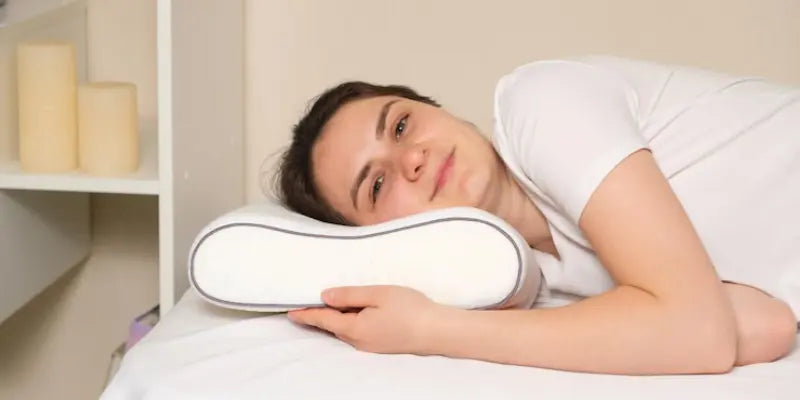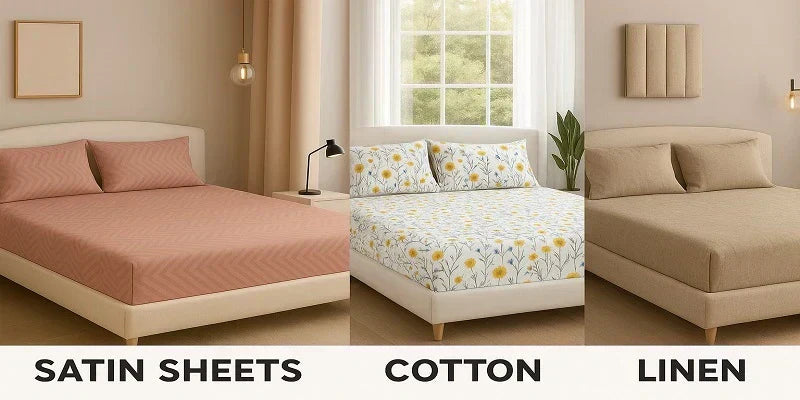
How to Choose the Best Pillow for Sleeping: A Complete Guide
If you are tired of walking up all exhausted, stiff neck and aching shoulders in the morning. It indicates that it is time to change your pillow and invest in a good quality pillow. Before choosing the right pillow for yourself, keep in mind you spend 7-9 hours each day with this pillow so it better suits your sleep style and requirements.
But with so many options available in the market it is hard to decide which pillow is best for you. In this complete pillow guide, we'll go over everything you need to know to find the best pillow for sleeping your needs so that you wake up all freshen in morning.
Understanding Pillow Types: From Down to Memory Foam
When it comes to pillows, one size certainly does not fit all. From traditional down pillows to innovative memory foam options, there's a wide array of materials and designs to choose from. Each type of pillow offers unique benefits and considerations, so let's break down the most common options:
- Down Pillows: Known for their luxurious softness and lightweight feel, down pillows are filled with the soft under feathers of ducks or geese. They provide excellent support and can be fluffed to your desired loft, making them a popular choice for those who prefer a plush sleep surface.
- Memory Foam Pillows: Memory foam pillows are crafted from viscoelastic foam that molds to the shape of your head and neck, providing personalized support and pressure relief. They're ideal for individuals with neck pain or alignment issues, as they contour to your unique couple sleeping position.
- Fiberfill Pillows: Also known as polyfill, fiberfill is the cheapest option on the list. It flattens out faster, and sadly, polyester products are made with chemicals that contribute significantly to environmental degradation. This may be a decent alternative if price is your primary concern; otherwise, you can choose another option.
- Feather pillows: Feather pillows are a cheaper alternative to down pillows. Unlike down, feather quills naturally align or lay flat. After a while, the pillow becomes flat and may not be as comfy. Some producers commonly incorporate clusters of down into the feathers to prevent deterioration.
- Buckwheat Pillows: Most people still prefer the natural, classic buckwheat pillow. Buckwheat husk is firm and crispy. However, the pillow's hulls fight dust mites, which helps to relieve pains and aches by adhering exactly to the body contours.
- Shredded Memory Foam Pillows: As the name implies, shredded memory foam contains microscopic bits of torn form. The foam components move individually, allowing you to build it into any shape you wish.
- Latex: Latex pillows are more trendy. This cushion is somewhat airy and provides excellent support for the neck and head while remaining soft.
- Gel pillows: Gel pillows include gel filling, which maintains the pillow firm, cool, and constant. The gel in the cushion keeps it from flattening, but it may still be reshaped/molded for added comfort.
You'll also notice a layer of gel around memory foam pillows. These pillows are often referred to as gel memory foam pillows or memory foam pillows with gel. Gel cooling combined with memory foam contouring.
Finding the Right Loft and Firmness Level
When selecting a pillow for sleeping, two crucial factors to consider are loft and firmness. Loft refers to the height and thickness of the pillow, while firmness relates to its level of support and compression. Finding the optimal combination of loft and firmness is essential for achieving proper spinal alignment and comfort. Here's how to determine the right balance for your needs:
- Low Loft: Ideal for stomach sleepers, low loft pillows provide minimal elevation to prevent strain on the neck and spine. They're also suitable for individuals with smaller frames or those who prefer a flatter sleep surface.
- Medium Loft: Most versatile and suitable for a wide range of sleep positions, medium loft pillows offer a balance of support and comfort. They provide adequate elevation for back and side sleepers without causing excessive strain on the neck.
- High Loft: Recommended for side sleepers and individuals with broader shoulders, high loft pillows offer maximum support and alignment by filling the gap between the head and shoulders. They help maintain neutral spine alignment and prevent neck pain and stiffness.
Considering Sleep Position and Personal Preferences
Your preferred sleep position plays a significant role in determining the type of pillow that will best support your head and neck. Whether you're a side sleeper, back sleeper, or stomach sleeper, there's a pillow designed to accommodate your unique needs.
Here's how to match your pillow to your sleep position:
- Side Sleepers: Look for a firm pillow with a high loft to fill the space between your head and shoulders, ensuring proper alignment and support. Consider a contoured or ergonomic pillow to cradle your neck and prevent tilting.
- Back Sleepers: Opt for a medium loft pillow with moderate firmness to maintain neutral spine alignment and prevent the head from tilting too far forward or backward. A memory foam pillow may provide additional support and pressure relief.
- Stomach Sleepers: Choose a low loft pillow with a soft to medium firmness to minimize strain on the neck and prevent hyperextension. Consider a thin or flat pillow to keep the head and spine in a neutral position.
Exploring Specialized Pillow Features and Benefits
In addition to basic considerations such as material, loft, and firmness, many pillows offer specialized features designed to enhance comfort and support. From cooling technologies to adjustable fill levels, these innovative options cater to specific sleep preferences and needs. Here are some popular specialized pillow features to explore:
- Cooling Properties: The best cooling gel pillow in india or ventilated designs help regulate temperature and wick away heat, promoting a cooler and more comfortable sleep environment.
- Adjustable Fill: Pillows with adjustable fill allow you to customize the loft and firmness level by adding or removing filling materials. This feature is ideal for individuals who prefer personalized support or who experience changes in sleep preferences over time.
- Anti-Allergen Treatments: Hypoallergenic pillows are treated to resist dust mites, mold, and other allergens, making them suitable for individuals with allergies or sensitivities.
Conclusion: Finding Your Best Pillow for Sleeping
In conclusion, selecting the right pillow for sleeping is essential for achieving restorative and comfortable sleep. By considering factors such as material, loft, firmness, sleep position, and specialized features, you can narrow down your options and find the pillow that best meets your needs.
Remember to prioritize comfort, support, and alignment when choosing your pillow, and don't be afraid to experiment with different styles until you find the perfect fit. With the right pillow by your side, you can wake up feeling refreshed, rejuvenated, and ready to tackle the day ahead. Sweet dreams!








